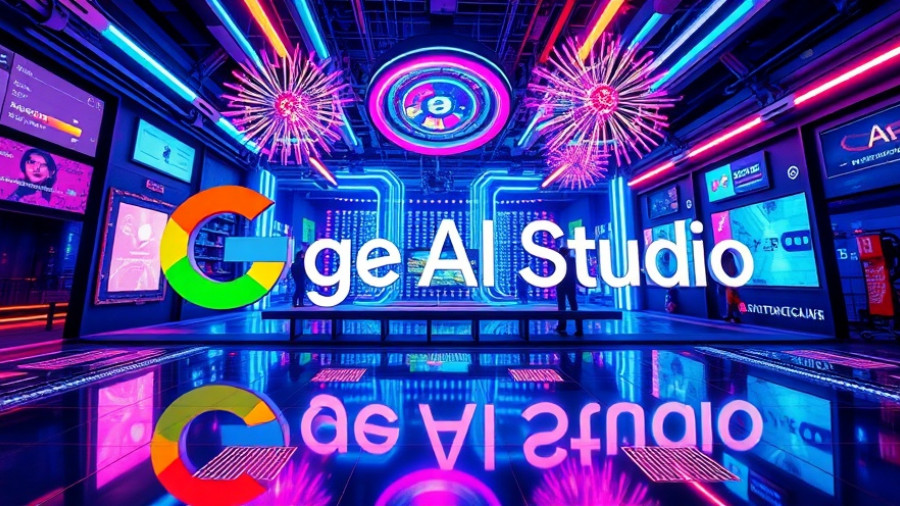
The New Era of Digital Presence: Why an AEO-Ready Website Matters
In today’s rapidly evolving digital landscape, the concept of an AEO-ready website is paramount for all business leaders. With the advent of sophisticated AI agents like ChatGPT, Perplexity, and Google Lens, the battleground for customer attention has shifted dramatically. Traditional search strategies that once dominated the digital marketing sphere are now being outpaced by technologies that can deliver immediate, curated responses to user queries. Understanding this shift is essential for enhancing online visibility and driving consumer engagement.
The Transformative Impact of AI Agents
The rise of AI agents has introduced a pivotal buying influence that affects how potential customers interact with brands. Rather than simply providing search results, AI agents deliver in-depth summaries and curated insights based on the user’s unique context. For instance, if a user is browsing a product page and poses a relevant question, AI systems can reference competitive offerings in real-time, potentially swaying the user toward alternative choices. According to research, companies must rethink their content strategies, moving beyond superficial information to delivering deep, useful insights tailored to specific pain points of Ideal Client Avatars (ICAs).
Understanding Answer Engine Optimization (AEO)
As the focus shifts from traditional SEO to AEO (Answer Engine Optimization), companies must adapt their strategies accordingly. AEO prioritizes presenting clear, concise answers directly addressed to users’ questions, an approach that has become increasingly critical given the rise of zero-click searches. Indeed, over half of all Google searches now result in users finding their answers directly on the results page, eliminating the need to click through to various websites. This shift means that companies have to ensure their content is positioned as a decisive answer to specific queries rather than a mere link that requires additional navigation.
The Structural Imperatives: Alignment, Accessibility, and Consistency
The layout and structure of a website must evolve in alignment with AI algorithms that prioritize information accessibility. This entails reengineering website architecture to facilitate user experience optimization and ensure that both AI systems and humans can easily comprehend the content. By integrating schema markup and employing other technical SEO best practices, such as ensuring fast loading times and mobile responsiveness, businesses can maximize their chances of being cited in AI-generated responses.
The Power of Tailored Content Strategies
Content remains vital, but its purpose is undergoing a transformation. Businesses must now focus on creating content that resonates more closely with their ICAs by answering highly specific questions. This involves structuring content so it not only represents company offerings but also connects deeply with user needs, providing value upfront. Companies that excel at this will increase their discoverability through AI agents, enhancing their authority in the digital landscape.
Embracing the Shift: AI and the Future of Consumer Interaction
The consumer journey is increasingly characterized by interactions with AI-driven platforms that gather and process information from multiple sources, making it crucial for brands to establish their presence outside their websites. They need to maintain credibility across various online platforms, focusing on building brand authority and ensuring their content is consistently cited by AI sources. For instance, AI platforms now significantly leverage user-generated content and conversational formats, highlighting the importance of creating engaging and high-quality content that speaks directly to audiences.
Metrics for Success: Tracking AEO Effectiveness
To grasp how well a business is adapting to this new paradigm, it’s vital to track relevant metrics distinct from traditional SEO indicators. Monitoring methods include assessing brand mentions across AI platforms, analyzing citation patterns, and tweaking content strategies based on emerging data. Effective AEO means not only optimizing for search but also building a systematic approach that positions brands as the primary sources of trusted information within their industries.
Conclusion: The Imperative for Business Leaders
The digital marketing landscape is more dynamic than ever, and as AI continues to redefine consumer interactions, it’s imperative for business leaders to reevaluate their website strategies. Adopting AEO principles is not just optional—it’s essential for attaining visibility and relevance in this AI-driven age. By taking proactive steps to re-architect their digital presence, companies can secure a competitive advantage and ensure they are cited as authorities in the new era of search.
Ready to redefine your digital strategy? Connect with our team to explore how you can enhance your brand's AI visibility today!
 Add Row
Add Row  Add
Add 




Write A Comment